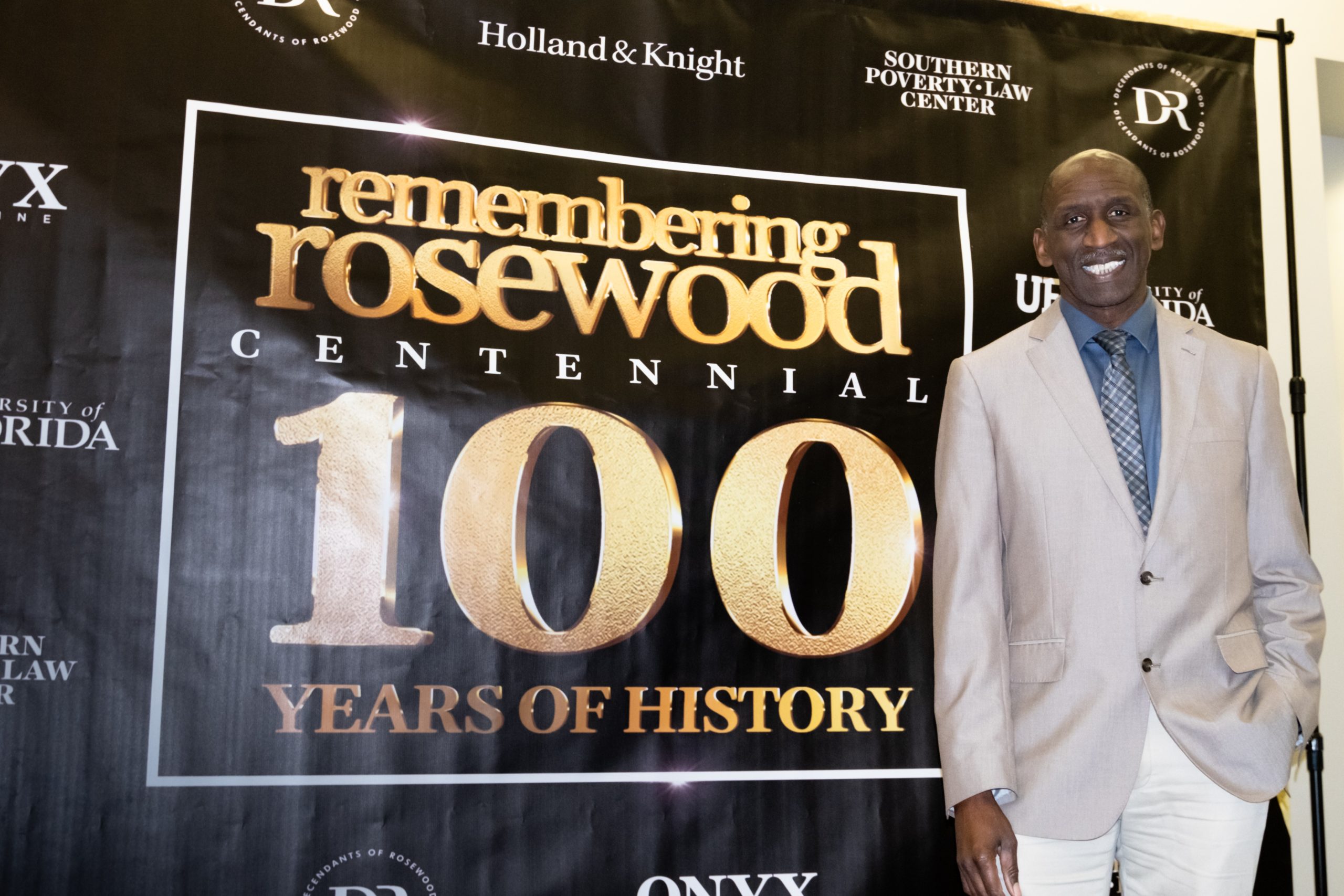
SJGC journalism professor Kenneth Jones was highlighted at the 100th anniversary of the Rosewood Massacre held at The University of Florida in Gainesville. His docudrama, “Rosewood”, was screened on January 12 during Remembering Rosewood, a weeklong event series to commemorate the legacy of the surviving Black families and their stories.
During the post-reconstruction era, many Blacks unified in southern cities and towns to establish a way of life after the abolishment of slavery. Rosewood was home to about 200 Black people that owned their own land, houses and businesses. It was representative of a bustling Black community fighting to rise above the institution of slavery.
100 years ago, a group of white men raided the predominantly Black town in Levy County, Fla. after a white woman claimed she was attacked by an unidentified Black man. Black men and women were brutally beaten, lynched and forced to watch their progressive legacy burn to the ground. A train of Rosewood residents, specifically women and children, were shuttled out of the terror, giving them the responsibility of creating an entire new life for themselves.
Remembering Rosewood honored the lives impacted in January 1923 through honest dialogue and inspirational motive for the future. In 1994, Governor Chiles signed House Bill 591, which acknowledged the destruction of Rosewood, the failures of the government and identified the area safe to return. Descendants of the eight affected families were awarded $2.1 million in reparations for the irreparable harm caused.
This monumental act makes the Rosewood families the only group of African Americans to receive reparations from the government.
Jones’ immersive documentary details the history of the devastating small-town tragedy and was instrumental in the road to reparations.
“I was rushing it like crazy, I probably wrote the script in two days. We shot it in a day or two, because there weren’t any visuals of the tragedy,” Jones said.
“Rosewood” was released the same year the legislation was signed making it a monumental visual representation of what happened to the community. The argument of Rosewood descendants were strengthened by having physical evidence of the historic events.
The revisitation of Jones’ previous creative work left room for discussion on the future of race in America.
“My take, observation and comments were, what can we take from there to here, especially in terms of community relations. We still have land grabs going on where poor people of color are losing land,” Jones said. “I was glad that we could talk in a present day [context] and how we could all get along better.”





